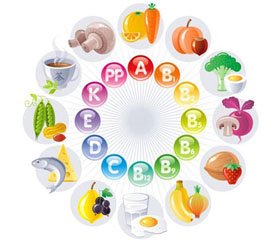Журнал «Боль. Суставы. Позвоночник» 1 (21) 2016
Вернуться к номеру
Antenatal prevention of phosphorus-calcium metabolism disoders in children: realities and prospects
Авторы: Boyarchuk O., Balatska N., Budnik T., Boychuk A., Kinash M. - Ternopil State Medical University
named after I. Horbachevsky, Ternopil, Ukraine
Рубрики: Ревматология, Травматология и ортопедия
Разделы: Медицинские форумы
Версия для печати
The article was published on p. 67-68
The role of vitamin D in calcium-phosphorus metabolism is indisputable. Organs and systems development of the fetus, its rapid prenatal growth require not only adequate intake of calcium in the mother’s body, but vitamin D too.
According to the Protocol for the treatment and prevention of rickets in children in Ukraine, a specific antenatal prevention of rickets is vitamin D intake at a dose of 500 IU in healthy pregnant women and 1000–2000 IU in the case of risk presence, ranging from 28–32 weeks within 6–8 weeks.
The aim of our study was to establish awareness of pregnant women and obstetricians about methods of antenatal prevention of rickets in children and based on an analysis of the literature data to determine its feasibility.
Materials and methods. The survey of 120 pregnant women was done. It included a questionnaire containing a block of questions related to the suppliance of vitamin D (according to the Protocol), as well as questions about the awareness of women recently confined about the role of the vitamin D. The survey of 25 obstetrician-gynecologists was done too regarding their awareness of antenatal prevention of rickets Protocol in children.
Results. The survey revealed vitamin D intake in 81 (67.5 %) pregnant women. Most of them (40–33.3 %) received vitamin D at a dose of 400–500 IU daily in the form of complex vitamin and microelements, ranging from 12 weeks of pregnancy. 48 (40.0 %) pregnant women received it additionally. One woman took them from 8 to 16 weeks, as she read that just at that period enhanced bone formation was gone and the need of calcium and vitamin D increased. The other woman took 500 IU Ergocalciferol from 28 to 34 weeks on the advice of the doctor, as during this period she did not go out because of fear to catch disease (January — February).
75 (62.5 %) women took fish oil on prescription of the doctor, whom they were registered, as they were suffering from the signs of preeclampsia. Among the women who took fish oil were dominated pregnant women not for the first time.
48 (40 %) women recently confined knew about vitamin D and its benefits during pregnancy. The rest of women were not aware of the importance of vitamin D.
Obstetrician-gynecologist, involved in the care of pregnant, well aware of vitamin D indications for obstetric reasons, but do not use it for antenatal prevention of rickets in children.
There are different views on the impact of vitamin D intakes in pregnant woman on the physical development of the fetus and newborn child.
The majority of investigation and clinical researches showed that providing vitamin D to pregnant women has little or no effect on fetal weight, skeletal parameters and mineral content. Some studies revealed greater birth weight and total body calcium levels in the fetuses whose mothers received calcium and vitamin D supplement but no change in other skeletal variables (Chan G.M. et al., 2006). Prenatal vitamins containing 400 IU of vitamin D3 have little effect on circulating maternal 25-OH-D concentrations, especially during the winter months and some researches proved that the vitamin D status of the mother has long-term effects on her child (Carol L., Wagner et al., 2008). Cooper C. et al. (2005) have shown that vitamin D deficiency in pregnant women is associated with reduced bone mineralization as in utero and in early postnatal period and may be accompanied by low weight at birth and in early childhood, which further increases the risk of fractures.
Conclusion. Thus, researches have shown that extra vitamin D during pregnancy is mainly provided by fish oil or common multivitamins, doses and duration of its taking were not always adequate and in discrepancy to the Protocol.
Intakes vitamin D during pregnancy is important not only for maternal well-being but also for fetal development and for health of future child. Development and implementation of adequate Protocols for antenatal prevention of phosphorous-calcium metabolism disorders by health care professionals involved in the care of pregnant women is very important.

